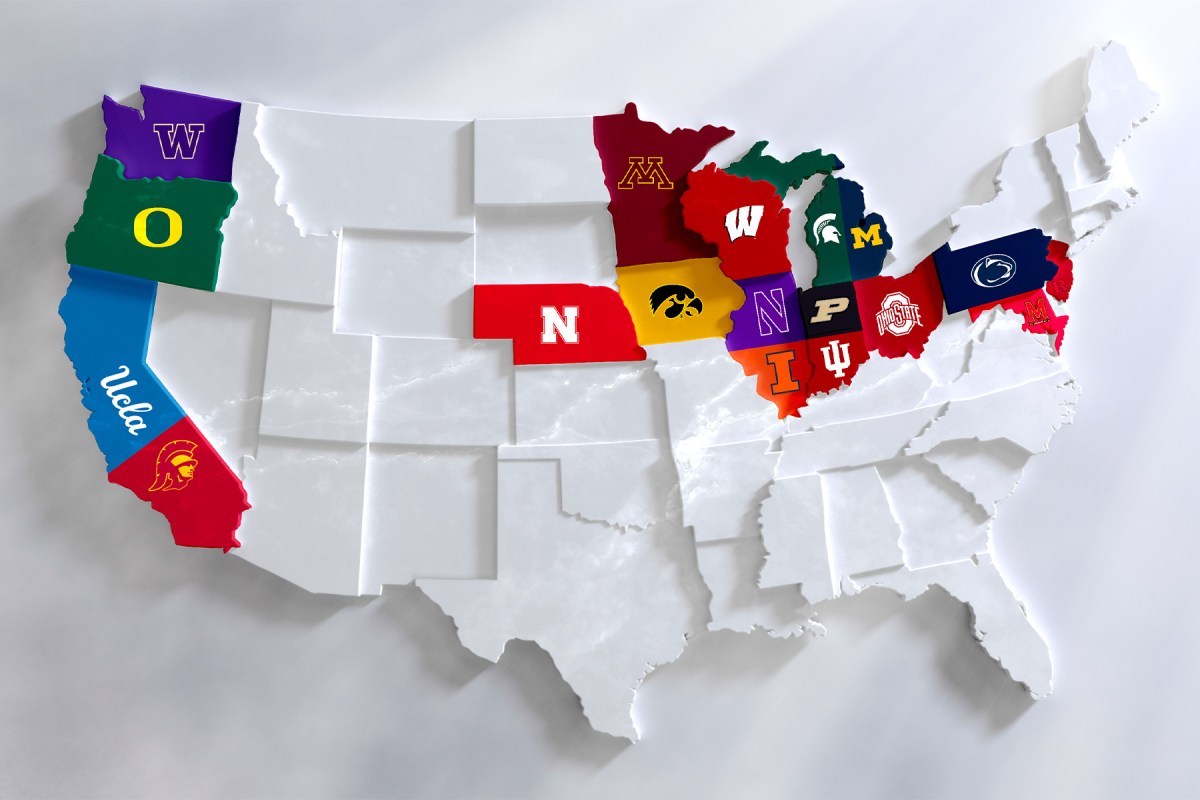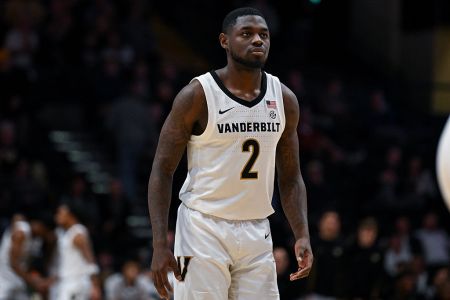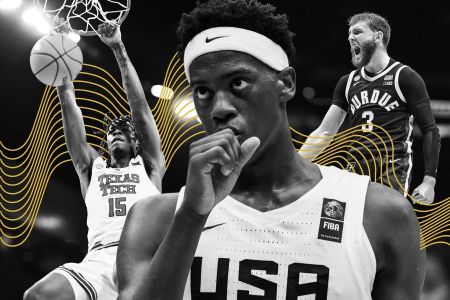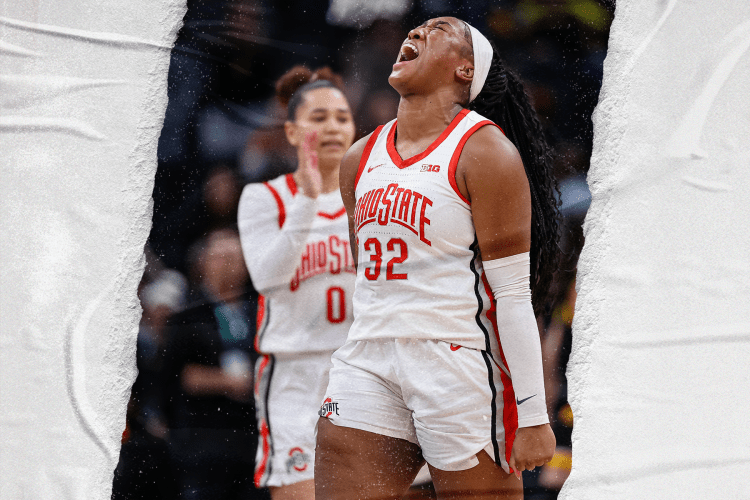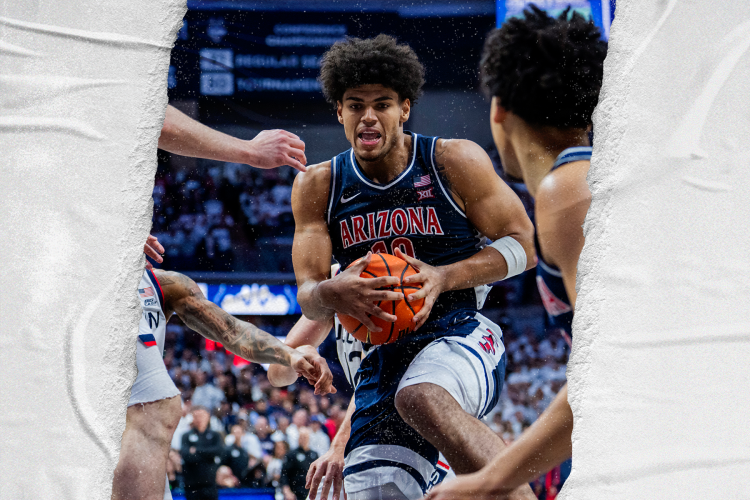Northwestern’s Brooks Barnhizer and Nick Martinelli are best friends and roommates. In the apartment they share with teammate Blake Smith, they’re not afraid to let a little grit and grime build up.
“That’s the problem with both of us living together because we’re not the cleanest guys,” Martinelli told Hoops HQ. “Eventually it’ll get to the point where it’s ‘Bro, all right, we’ve got to clean some stuff up.’ ”
To be fair, their embrace of grit and grime — in the practice gym — goes a long way to explain how Barnhizer, a 6-foot-6, 230-pound senior guard, and Martinelli, a 6-7, 225-pound junior forward, have built themselves into America’s No. 2 scoring duo. After Sunday’s 85-60 win over Northeastern to close out the Wildcats’ non-conference schedule, Martinelli (20.2) and Barnhizer (20.1) are combining for 40.3 points per game. Among all 364 Division I teams, only Rutgers’ Dylan Harper (23.3 ppg) and Ace Bailey (17.6 ppg) average more.
Barnhizer is a unicorn unto himself. He’s the nation’s only player averaging at least 20 points, nine rebounds (9.4), four assists (4.0), two steals (2.6) and one block (1.1) per game. To put his numbers into perspective, Auburn’s Johni Broome is generally regarded as the leader for National Player of the Year — and he’s averaging 18.5 points, 11.5 rebounds, 3.3 assists, 0.7 steals and 2.6 blocks.
Barnhizer also enters the New Year with six consecutive double-doubles, the longest active streak in America. It’s not uncommon for him to grab a defensive rebound and take it coast-to-coast for a layup or to create on the break like he did against Georgia Tech on Dec. 15, when he threaded a 40-foot bounce pass down the middle of the court — a la Pistol Pete Maravich — to Justin Mullins for a goaltended layup.
It’s not just about offense with Barnhizer, either. A reigning member of the Big Ten’s All-Defensive team, Barnhizer generally guards wings, but Northwestern coach Chris Collins doesn’t hesitate to ask Barnhizer to defend point guards and 7-footers when necessary. Barnhizer spent multiple possessions on Illinois’ 7-foot-1 Tomislav Ivisic in the Wildcats’ overtime victory Dec. 6.
“He is such a competitor,” Collins said. “He is so tough. And that being said, he’s also a very skilled player. He can handle the ball. He can initiate offense. He can play in pick-and-roll. He can play out of backdowns and isolations…and you know he’s going to bring the other stuff: rebounding, intangibles, defense. I mean, why wouldn’t you want someone like that on your team — at any level in the world?”
Barnhizer is even that guy who didn’t mind giving up his two front teeth to take a charge — in practice. Three Mondays ago, Northwestern conducted a 4-on-4 “scramble” drill with coaches and grad assistants on offense and Barnhizer, Martinelli, Ty Berry and Jalen Leach moving as one unit for 20 seconds to stop them. With the clock running down, Barnhizer saw one of his teammates get beat off the dribble, so he slid over to take a charge. When the GA jumped to throw a pass, his elbow crashed down on Barnhizer’s mouth and fractured his two front teeth — requiring a bone graft and a retainer. He’ll wait until the end of the season to get implants.
“He was just doing his job, he was just trying to play hard,” Barnhizer said. “Our coaches were just trying to have them give us a really good look. When I take (the retainer) out and brush my teeth at night, I look at myself and go, ‘OK, this is different.’ But I know ultimately that I’ll have teeth when it’s all said and done, so it’s worth it.”
During the Wildcats’ trip to Italy this summer, Barnhizer wasn’t able to play due to a foot injury and fellow starters Ty Berry (knee) and Matthew Nicholson (foot) also sat out to heal. Barnhizer still woke up Martinelli at 6:30 a.m. on non-game days for workouts. “I knew that was something he would want me to ask him to do,” Barnhizer said. “It was really cool. It would just be us with Ty and Matt and we’d be blaring music and we’d be in Italy. It’s just four guys trying to get better. It’s stuff you laugh about when it’s over, but those are some really valuable moments for me.”
That has carried over to the season, which finds Northwestern at 10-3 with a NET rating of 53, which puts them right in the hunt for an unprecedented third straight NCAA Tournament appearance. It helped considerably that Martinelli stepped up to average 25.3 points while Barnhizer sat out the first four games with his foot ailment.
But Martinelli likes to point to the Wildcats’ practices as the time when he (and they) improve the most. “We like to get after each other and that’s what gritty and grimy is,” Martinelli said. “You’ve got to show up every day. Brothers fight. Sometimes guys get into it, or don’t like the way someone’s pushing, shoving, grabbing. It’s just because we want the best out of each other. Every single guy here is my brother.”
Time for time-zone travel and travails
When each Big Ten team played two league games earlier in December, the four West Coast schools faced each other. Now it’s time to find out how much the extra travel affects them.
Each of the 14 “original” Big Ten teams are being asked to fly west just once, but Oregon, UCLA, USC and Washington each must make four trips to play their seven road games in the Eastern and Central time zones. And that doesn’t count the Big Ten tournament in Indianapolis.
Hoops HQ checked in with USC assistant coach Michael Musselman, the 28-year-old son of head coach Eric and grandson of former Minnesota coach Bill, to learn how the Trojans are going to handle their four eastward trips in seven weeks. Their first itinerary features a Jan. 8 visit to Indiana and a Jan. 11 game at Illinois. “ ‘Coach Muss’ has a lot of connections in the NFL and MLB and NBA, so we did a lot of consulting with teams and people who deal with travel,” Musselman said. “They have scientists that do sleep optimization. So we’re going to do our best to stay on West Coast time. We want to get them as much sleep as possible. Coach Musselman is a big believer in sleep.”
That’s not going to be easy. For example, the Illinois game will tip at 9 a.m. Pacific time. “It’s going to be a challenge for sure,” Michael Musselman said. “But we practice in the morning. We usually start between 10 and 11, depending on the day. And our group, because they are older, they actually like to get up. We’ve had a few times when they’ve asked to move breakfast up.”
To Musselman’s point, USC boasts eight graduate students on its roster. But they’re minus an important one as Michigan transfer Terrance Williams II (10.6 ppg, 4.6 rpg) has missed the last four games with a broken wrist. The Trojans miss the four-man’s ability to stretch the floor with his three-point shooting, though USC has won those four games by an average of 25.5 points. Williams won’t be able to play against his former school when Michigan shows up on Saturday.
Around the Rim
– Once Big Ten play resumes Thursday, Illinois’ Feb. 22 date with Duke at Madison Square Garden will be the league’s only non-conference contest until the NCAA Tournament.
Therefore, there’s only so much movement Big Ten teams can make in the NET, KenPom and other algorithms based on how their non-conference opponents fare over the next 10 weeks. Did the Big Ten maximize their non-conference opportunities?
Well, the league went 7-10 versus the SEC, 6-2 against the Big 12, 7-4 versus the Big East and 10-6 against the ACC. That performance ranks the Big Ten second to the SEC in KenPom’s conference rankings, with the Big East a close third.
With 14 of the Big Ten’s 18 teams ranking among the top 54 in KenPom and 13 teams among the NET’s top 53 teams, it’s likely the league will earn at least 10 NCAA Tournament spots. USC (82 KenPom), Rutgers (83), Washington (103) and Minnesota (115) are the only teams that must make a significant climb to merit NCAA consideration.
– Speaking of the NCAA Tournament, UCLA’s 65-62 win over Gonzaga Saturday night didn’t quite make up for the Bruins’ painful NCAA losses to the Bulldogs in 2021 and 2023, but UCLA coach Mick Cronin still felt good about winning the first college game at the $2 billion Intuit Dome. “I was a miserable human for a couple days after the (North) Carolina (loss),” Cronin said, “but you’ve got to be mature enough to realize even if you win, you’ve got to get better.”
He doesn’t need to tell that to Eric Dailey Jr. After taking a shot to the nose last week against North Carolina, Dailey had to wear a mask against Gonzaga. Yet, he drilled 4 of 5 shots from three-point range on his way to a team-high 18 points in 26 minutes. That surprised exactly nobody in the program, considering Dailey was in UCLA’s practice gym on Christmas Eve getting his shots up.
“Every time I go into the gym, he’s always on The Gun,” said senior teammate Kobe Johnson, who hit four second-half three-pointers against Gonzaga. “Being able to see somebody like that so young and so hungry, it motivates the whole team to want to be ‘dawgs’ as well.”
Dailey’s daily work has been worth. He hit 19 of 57 three-pointers (33.3 percent) last year as an Oklahoma State freshman. He has canned 15 of 31 (48.4 percent) this year.
– Ohio State is the Big Ten’s biggest mystery team going into 2025. Aaron Bradshaw opened the year as the starting center, but he missed seven games while the school investigated an alleged off-campus incident. Meechie Johnson started the first 10 games at shooting guard, but he has been away from the team for two weeks while sorting out what the school has called a personal situation.
San Diego State graduate transfer Micah Parrish started the first 12 games, but he sat out Sunday’s win over Indiana State with an injury. Starting power forward Sean Stewart missed two games due to injury.
Despite all these stops and starts, Ohio State posted perhaps the league’s most impressive non-conference victory when it thwacked Kentucky by 20 points on a neutral court Dec. 21. Junior point guard Bruce Thornton, who lit up the Wildcats for a career-high 30 only to go for 33 points Sunday against Indiana State, has been playing at an all-Big Ten level while sophomore forward Devin Royal (14.8 ppg, 7.5 rpg) and freshman guard John Mobley Jr. (12.2 ppg, 47.1 3-point percentage) have excelled in their expanded roles. The Buckeyes sit at No. 24 in the NET. They might climb even higher if they can get everybody back together.
– While every other Big Ten team took at least three days off for Christmas, Nebraska zipped out to Hawaii and played three games to climb 16 spots in KenPom. The Cornhuskers captured the Diamond Head Classic by taking out Murray State by 17, Hawaii by 14 (which counts as a road win) and Oregon State by 12. The program hadn’t won a Multi-Team Event since 2000.
“The importance of winning three games against three quality teams is going to help us all the way down the road,” said head coach Fred Hoiberg. “(Brice Williams) was phenomenal. We rode him on both ends of the floor.”
Williams, a sixth-year senior, didn’t get a chance to play against Charlotte, his former school that lost to Hawaii in the quarterfinals, so he settled for winning MVP honors. Starting with his 30-point outburst against Indiana Dec. 13, Williams has averaged 24 points, 4.3 rebounds, 3.5 assists and 1.8 steals over his last four games while hitting 58.9 percent from the field and 53.3 percent from three.
Rutgers’ Dylan Harper and Northwestern’s Nick Martinelli are the only Big Ten players averaging more points than Williams’ 19.7 per game. He and Maryland’s Ja’Kobi Gillespie are the Big Ten’s only players exceeding the holy 50/40/90 shooting trinity (50-plus percent from the field, 40-plus percent from three and 90-plus percent at the line).
– Illinois junior guard Kylan Boswell racked up the Big Ten’s first triple-double of the 2024-25 season when the Champaign native posted 18 points, 10 rebounds and 10 assists Sunday against Chicago State. It marked the seventh in Illini history and the third year in a row they’ve earned a triple-double: Marcus Domask going 12-11-10 against Morehead State in last season’s NCAA Tournament opener and Coleman Hawkins hitting Syracuse for 15-10-10 on Nov. 29, 2022.
Games to Watch
Jan. 2: Illinois at Oregon (10 p.m. ET; FS1): Big Ten play resumes with five games Thursday, but this is the only one with two Top 25 teams per KenPom and NET. While the balanced Ducks get things done with five double-figure scorers, freshman point guard Kasparas Jakucionis has emerged as Illinois’ go-to guy. Will TJ Bamba, who’s five years older, be assigned to guard “KJ”?
Jan. 5: Indiana vs. Penn State (Noon ET; BTN): It’s a big tripleheader day on Big Ten Network and it all starts with Indiana’s first trip to The Palestra in 69 years. This is the fourth time in the last six years the Nittany Lions have lured a preseason top team to this fabled lair. They knocked off Luka Garza and Iowa in 2020 and Michigan last year, but Zach Edey put up 30 and 13 to lead Purdue to a 13-point triumph in 2023.
Jan. 5: Maryland at Oregon (4 p.m. ET, Peacock): So many great matchups here between two top teams. Derik Queen vs. Nate Bittle: two efficient big men who score inside and out. Ja’Kobi Gillespie vs. Jackson Shelstad: two undersized point guards who do whatever’s necessary for their teams, including hitting clutch shots. Selton Miguel vs. Keeshawn Barthelemy: two microwaves who are lethal from three-point range.
Jan. 7: Michigan at UCLA (10 p.m. ET, Peacock): Here are two of the three teams that enter 2025 with a 2-0 record in league play and it’s a particularly fascinating matchup because Michigan thrives despite the league’s worst turnover percentage and UCLA forces turnovers at a higher rate than anyone else in America. Which Bruins stoppers will get a crack at guarding 7-footer Danny Wolf – Eric Dailey Jr., Tyler Bilodeau, Kobe Johnson, Aday Mara or all of the above?

